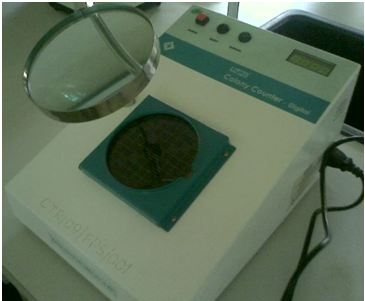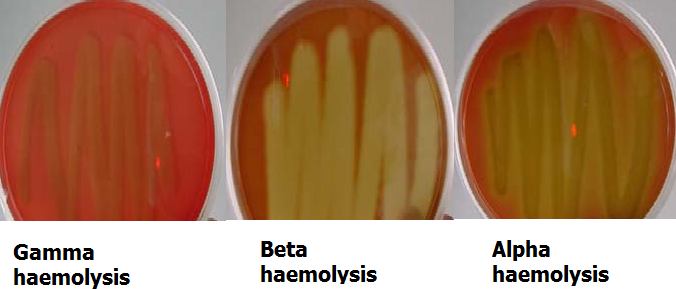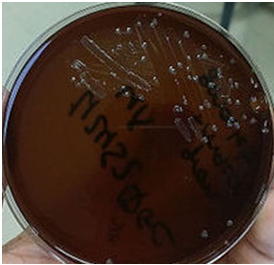Colony counter is a piece of equipment which is used in the microbiology laboratory to count individual colonies of microorganisms (particularly bacteria and fungi) on solid agar plates. Fully automated colony counters and manually-operated counters are available for the counting of microbes in samples or culture plates.
The accurate count of bacterial colonies and cells from solid agar plates and/or samples is critical for most biological procedures in the microbiology laboratory (especially in clinical settings) because they give presumptive results about the infecting organism so that action can be taken to contain the situation. Apart from the traditional colony counting machine as shown in Figure 1, automated techniques also exist for the fast enumeration of bacterial cells on agar plates or even in suspensions.
In the microbiology laboratory, microorganisms growing on solid agar plates (especially for bacteria and fungi) are usually enumerated in rough estimates which are expressed as colony forming unit (CFU). CFU gives an implicit count of viable cells of bacteria and fungi growing on solid agar plates; and microbial counts (especially on solid agar plates) as counted under the colony counter (Figure 1) are expressed as CFU per ml (CFU/ml) because it is usually uncertain to conclude whether or not the individual colonies on the agar plate arose from one cell or from many other cells.

Other techniques used in the microbiology laboratory to estimate microbial counts in a sample include the Most Probable Number (MPN) and microscopic techniques (which gives an estimate of both living and dead cells).
REFERENCES
Cheesbrough, M (2006). District Laboratory Practice in Tropical countries Part I Cambridge
Chung K.T, Stevens Jr., S.E and Ferris D.H (1995). A chronology of events and pioneers of microbiology. SIM News, 45(1):3–13.
Dictionary of Microbiology and Molecular Biology, 3rd Edition. Paul Singleton and Diana Sainsbury. 2006, John Wiley & Sons Ltd. Canada.
Goldman E and Green L.H (2008). Practical Handbook of Microbiology, Second Edition. CRC Press, Taylor and Francis Group, USA.
Madigan M.T., Martinko J.M., Dunlap P.V and Clark D.P (2009). Brock Biology of microorganisms. 12th edition. Pearson Benjamin Cummings Publishers. USA.
Nester E.W, Anderson D.G, Roberts C.E and Nester M.T (2009). Microbiology: A Human Perspective. Sixth edition. McGraw-Hill Companies, Inc, New York, USA.
Prescott L.M., Harley J.P and Klein D.A (2005). Microbiology. 6th ed. McGraw Hill Publishers, USA.
Willey J.M, Sherwood L.M and Woolverton C.J (2008). Harley and Klein’s Microbiology. 7th ed. McGraw-Hill Higher Education, USA.
Discover more from Microbiology Class
Subscribe to get the latest posts sent to your email.




